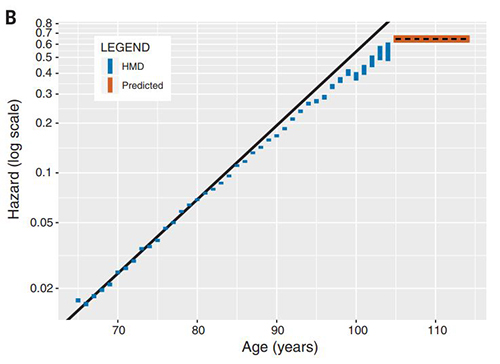No – we haven’t (yet) reached the limit of human lifespan
 In 1900, female life expectancy was around 50 years in most Western countries such as France, Canada and Germany. Almost 120 years later, today’s women can expect to live 40 years longer.
This extraordinary gain is the result of huge advances in medicine and improvements in living conditions. However, for some years now, life expectancy in the more affluent countries has stopped rising and somewhat worryingly, seems to be regressing, ending what appeared to be an infinitely upward curve.
In 1900, female life expectancy was around 50 years in most Western countries such as France, Canada and Germany. Almost 120 years later, today’s women can expect to live 40 years longer.
This extraordinary gain is the result of huge advances in medicine and improvements in living conditions. However, for some years now, life expectancy in the more affluent countries has stopped rising and somewhat worryingly, seems to be regressing, ending what appeared to be an infinitely upward curve.
Does this plateauing mean that we’ve reached the limit of human lifespan? Will Jeanne Louise Calment’s record age of 122 years ever be beaten?
Researchers investigating the boundaries of human lifespan are convinced it will (1). They believe we are nowhere near the limit of life expectancy, which could even be ‘infinite’!
This view is based on their research, published in the prestigious journal Science, which involved studying the outcome of 3836 European ‘supercentenarians’ – people aged 105+. After checking the subjects’ birth certificates to avoid any memory-related approximations, the scientists made a striking discovery: while all the evidence shows that the risk of mortality increases with each passing year, it seems that this risk plateaus after the age of 105.

The researchers found that a woman aged 106 was as likely to die in the current year as one aged 115 (a probability of around 50%). This observation runs counter to the theory of cumulative risk, supported by demographic data from the age of 30, whereby mortality risk increases exponentially with age. Thus the probability of dying in your 60th year is 0.65% for women, rising to 1.62% at the age of 70 ans.
From the age of 105 however, the risk of mortality stabilises. It seems that beyond this age, we do not face any additional risk linked to disease or ageing. This plateau – which had been demonstrated in previous studies (2-4) - made the researchers think that maximum life expectancy could be significantly extended. In order for that to happen, you would need to eliminate ‘new’ risk factors - which are not yet fully understood and which are undoubtedly behind the plateauing and even decline in life expectancy seen in more affluent countries: chronic exposure to pesticides, chronic stress, pollution, endocrine disruptors, lack of physical activity linked to sedentary lifestyles, changes in human relations and the ever-increasing industrialisation of our food …
Most of these factors are already widely documented in the scientific literature and the means of avoiding them are well-established (an antioxidant-rich diet, progressive exposure to sunlight, diverse physical activity, calorie restriction, supplementation to compensate for shortfalls associated with modern lifestyles, particularly with vitamin D, vitamin C and antioxidants, consumption of locally- and organically-produced food, mental stimulation, fulfilling work, etc). Unfortunately, these options are not available to all or are under-appreciated by the public as a whole.
It’s likely that the major advances in medicine and public health of the coming decades will lie in these areas. Unless, that is, they also concern the mechanisms directly involved in ageing such as shortening of telomeres (for which promising supplements already exist such as Cycloastragenol or Astragaloside IV), the accumulation of advanced glycation end-products and neurogenesis …
One thing’s for sure: there is huge potential for progress and such advances will undoubtedly lead to longer life expectancy. Those who closely monitor the latest scientific developments can already benefit from them.
References
- Barbi E, Lagona F, Marsili M et al. The plateau of human mortality: Demography of longevity pioneers, Science 29 Jun 2018: Vol. 360, Issue 6396, pp. 1459-1461, DOI: 10.1126/science.aat3119
- X. Dong, B. Milholland, J. Vijg, Evidence for a limit to human lifespan. Nature. 2016 Oct 13;538(7624):257-259. doi: 10.1038/nature19793. Epub 2016 Oct 5.
- A. Lenart, J. W. Vaupel, Questionable evidence for a limit to human lifespan. Nature. 2017 Jun 28;546(7660):E13-E14. doi: 10.1038/nature22790.
- H. Rootzén, D. Zholud, Human life is unlimited – but short, Extremes 20, 713–728 (2017).
All rights reserved
Free
Thank you for visiting our site. Before you go
REGISTER WITHClub SuperSmart
of exclusive benefits:
- Free: our weekly science-based newsletter "Nutranews"
- Special offers for club members only

















